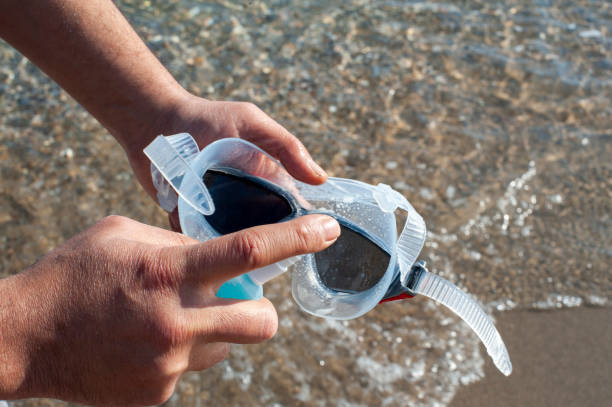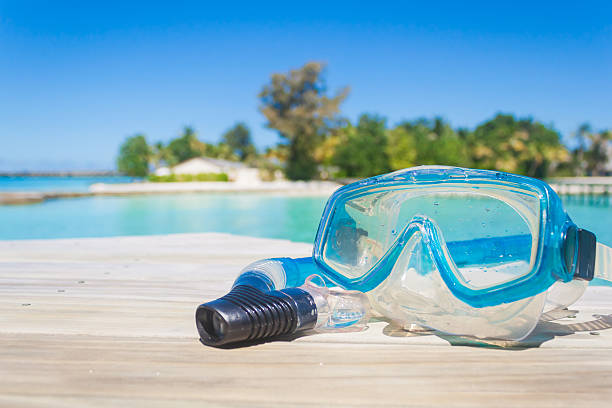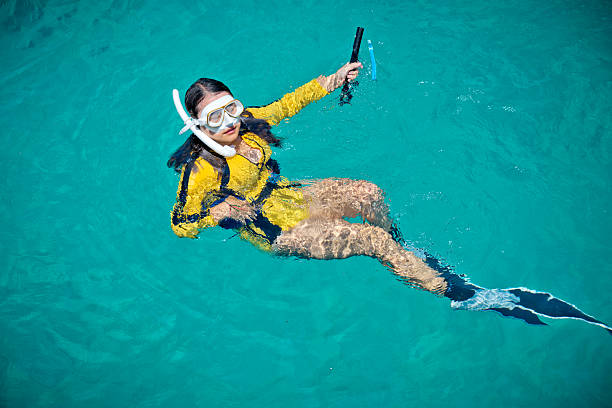O que é um colete salva-vidas? Os coletes salva-vidas são essenciais para a segurança das crianças na água, proporcionando um suporte crucial à flutuabilidade. Como o afogamento é um risco significativo para crianças pequenas, especialmente aquelas de 1 a 4 anos, os coletes salva-vidas desempenham um papel vital na prevenção de acidentes. Este blog tem como objetivo destacar a importância dos coletes salva-vidas na promoção da segurança aquática para crianças e educar os pais sobre sua importância. Entender como os coletes salva-vidas incentivam posições corretas de natação e aumentam a confiança é fundamental para garantir que seus pequenos tenham uma experiência aquática segura e agradável.

O que é um colete salva-vidas?
Coletes e jaquetas flutuantes são usados sobre trajes de banho ou shorts para ajudar as crianças a alcançarem uma posição natural na água enquanto aprendem a nadar. Eles atuam como um auxílio à flutuabilidade, trabalhando com a flutuabilidade natural da criança para aumentar seu nível de segurança na água. Essas jaquetas possuem boias removíveis que podem ser retiradas gradualmente conforme a confiança e a habilidade da criança na natação melhoram. Além disso, há coletes disponíveis com boias não removíveis para maior conveniência.
Comparação com outros dispositivos de flutuação
Ao comparar coletes salva-vidas com coletes salva-vidas, é essencial observar que os coletes salva-vidas são benéficos para crianças que estão aprendendo a nadar em ambientes controlados, como piscinas. Ao contrário dos coletes salva-vidas, eles não oferecem o mesmo nível de proteção ou flutuação e não devem ser usados em situações em que o colete salva-vidas seja necessário. Os coletes salva-vidas são projetados especificamente para águas calmas, como piscinas, oferecendo mais mobilidade do que os coletes salva-vidas, tornando-os ideais para a prática de natação sob supervisão.
Para que idade servem os coletes de natação?
Coletes de natação são uma ferramenta essencial para crianças pequenas que começam a explorar e aprender a navegar na água. Esses coletes são projetados para fornecer flutuabilidade e suporte, ajudando a manter as crianças seguras e confiantes enquanto desenvolvem suas habilidades de natação. Normalmente, os coletes de natação são destinados a crianças entre 1 e 8 anos de idade, embora a faixa etária exata possa variar dependendo da marca e do modelo.
Para bebês e crianças pequenas, especialmente aquelas entre 12 e 18 meses de idade, os coletes de natação desempenham um papel fundamental na segurança aquática. Um colete de natação para um bebê de 12 meses precisa oferecer ampla flutuabilidade e apoio para a cabeça, já que as crianças nessa idade estão apenas começando a se familiarizar com a água. Esses coletes devem ter um ajuste seguro para evitar que a criança escorregue, e alças ajustáveis são úteis para garantir que o colete cresça junto com a criança.
- Observação: Ao escolher um colete salva-vidas para um bebê de 12 meses, procure modelos que sejam projetados especificamente para bebês e que ofereçam recursos como alças entrepernas e apoios de cabeça acolchoados para fornecer o máximo de segurança e conforto.
À medida que as crianças crescem e se tornam mais ativas na água, os requisitos para seus coletes de natação mudam. Por exemplo, o melhor colete de natação para um bebê de 15 meses não deve apenas proporcionar flutuabilidade, mas também permitir maior liberdade de movimento. Nessa idade, as crianças estão começando a explorar sua mobilidade na água, e um colete de natação bem projetado pode ajudá-las a desenvolver habilidades básicas de natação, mantendo-as seguras.
- Observação: Procure coletes feitos de materiais duráveis e confortáveis que não causem atrito nem restrinjam os movimentos. Coletes de cores vibrantes com recursos de segurança, como alças fáceis de segurar, podem ser particularmente úteis para resgates rápidos, se necessário.
Entre os 16 e 18 meses, o colete de natação deve continuar a oferecer um suporte robusto, acompanhando a crescente confiança e o nível de atividade da criança na água. Um colete de natação para uma criança de 16 meses deve ter recursos ajustáveis para garantir um ajuste confortável e ser leve o suficiente para não atrapalhar os movimentos da criança. O colete deve proporcionar um bom equilíbrio entre flutuabilidade e flexibilidade, permitindo que a criança pratique chutes e remadas sem se sentir sobrecarregada.
Da mesma forma, um colete de natação para uma criança de 18 meses deve ser ideal para um nadador mais aventureiro e curioso. Esses coletes devem oferecer flutuabilidade significativa, mas também incentivar o desenvolvimento de técnicas de natação, mantendo a criança em uma posição natural de natação. Os pais podem achar que coletes com proteção UV integrada são uma excelente opção para sessões de natação ao ar livre, proporcionando segurança e proteção solar.
Benefícios dos coletes de natação

A natação é uma habilidade essencial, e os coletes de natação desempenham um papel crucial para ajudar crianças pequenas a aprender com segurança e confiança. Vamos explorar os benefícios do uso de coletes de natação para crianças.
Segurança aprimorada
Os coletes de natação proporcionam segurança essencial para jovens nadadores, oferecendo flutuabilidade e prevenindo incidentes de afogamento. De acordo com os Centros de Controle e Prevenção de Doenças (CDC), o afogamento é uma das principais causas de morte por lesão entre crianças de 1 a 4 anos. Os coletes de natação ajudam a mitigar esse risco, mantendo as crianças flutuando, permitindo que os pais se concentrem na supervisão em vez do apoio físico constante.
Construção de confiança
Coletes de natação aumentam significativamente a confiança das crianças na água. Um estudo realizado pela Cruz Vermelha Americana constatou que crianças que usavam coletes de natação tinham maior probabilidade de participar de aulas de natação e atividades aquáticas. Por exemplo, uma criança de 3 anos aprendendo a nadar com um colete pode explorar a piscina livremente, reduzindo gradualmente sua dependência do colete à medida que se torna mais confortável e habilidosa.
Posição correta para nadar
Os coletes de natação estimulam a posição correta de natação, essencial para o aprendizado de técnicas eficazes de natação. Ao manter o corpo da criança na horizontal e a cabeça acima da água, os coletes de natação promovem uma postura natural de natação. Um exemplo real é observado em escolas de natação, onde crianças que usam coletes demonstram melhor alinhamento corporal e progressão mais rápida nos níveis de natação em comparação com aquelas sem coletes.
Independência e Mobilidade
Os coletes de natação permitem que as crianças se movimentem independentemente na água, promovendo uma sensação de autonomia. Por exemplo, um pai compartilhou que seu filho de 2 anos, que inicialmente tinha medo da água, começou a gostar de sessões de natação depois de usar um colete de natação. O colete proporcionou à criança a liberdade de nadar na piscina de forma independente, tornando as atividades aquáticas agradáveis e menos intimidantes.
Tipos de coletes de natação

Ao escolher um colete de natação para seu filho, é essencial entender os vários tipos disponíveis. Esses coletes diferem em material, design e características específicas para cada idade, atendendo a diversas necessidades.
Tipos de materiais
1. Coletes de natação de neoprene
O neoprene é um material popular para coletes de natação devido à sua durabilidade e flutuabilidade. Os coletes de natação de neoprene proporcionam excelente isolamento, tornando-os ideais para condições de águas mais frias. Eles oferecem um ajuste confortável, o que ajuda a manter a criança aquecida e segura. Além disso, os coletes de neoprene são resistentes ao desgaste, garantindo sua durabilidade por várias temporadas de natação. Um exemplo desse tipo seria o colete de natação de neoprene para uma criança de 18 meses, que combina conforto e aquecimento, essencial para nadadores mais jovens que podem sentir frio na água.
2. Coletes de natação de nylon
O náilon é outro material comum usado em coletes de natação. Os coletes de náilon são leves e de secagem rápida, tornando-os convenientes para uso frequente e viagens. Geralmente são mais acessíveis do que os coletes de neoprene e estão disponíveis em diversas cores vibrantes e designs divertidos. Esses coletes oferecem flutuabilidade suficiente e são fáceis de limpar, o que é uma vantagem para pais ocupados. Por exemplo, o melhor colete de natação para uma criança de 15 meses poderia ser um colete de náilon que oferece segurança e facilidade de uso.
3. Coletes de natação de espuma
Os coletes de natação de espuma são normalmente feitos com camadas de espuma flutuante costuradas no colete. Esses coletes proporcionam flutuabilidade consistente sem a necessidade de inflação, tornando-os uma opção confiável para jovens nadadores. Os coletes de espuma são duráveis e mantêm a flutuabilidade mesmo quando perfurados ou danificados. São uma excelente escolha para crianças que precisam de um auxílio de flutuação estável e confiável. colete de natação para bebê de 12 meses feito de espuma pode oferecer a estabilidade e a segurança necessárias para que os bebês experimentem a água pela primeira vez.
Variações de design
1. Coletes de natação básicos
Os coletes de natação básicos têm um design simples, focado em proporcionar flutuabilidade e manter a criança flutuando. Geralmente, possuem alças ajustáveis para garantir um ajuste seguro e estão disponíveis em diversos tamanhos e cores. Esses coletes são ideais para iniciantes que precisam de suporte confiável ao iniciar sua jornada na natação. Eles costumam ser a escolha ideal para pais que procuram um colete de natação prático e sem frescuras.
2. Coletes de natação com flutuadores de braço
Alguns coletes de natação vêm com flutuadores integrados para os braços, proporcionando flutuabilidade adicional e ajudando as crianças a manter a posição correta de natação. Esses designs são particularmente úteis para nadadores jovens que precisam de suporte extra para os braços e ombros. A flutuação adicional nos braços pode ajudar as crianças a aprender a remar e bater as pernas com mais eficácia. colete de natação para criança de 16 meses com flutuadores de braço podem oferecer a flutuabilidade extra necessária para crianças que estão começando a ganhar confiança na água.
3. Coletes de natação de corpo inteiro
Os coletes de natação de corpo inteiro cobrem mais o tronco da criança e, às vezes, incluem recursos adicionais, como faixas para as pernas ou apoio para a cabeça. Esses coletes são projetados para máxima segurança e são frequentemente usados por bebês e crianças muito pequenas. Os coletes de corpo inteiro garantem que a criança permaneça em uma posição segura e estável, reduzindo o risco de virar na água. Esses coletes são perfeitos para pais que desejam a máxima proteção para seus pequenos nadadores.
Designs específicos para cada idade
1. Coletes de natação infantis
Os coletes de natação infantis são projetados para os nadadores mais jovens, geralmente de 6 meses a 2 anos de idade. Esses coletes priorizam a segurança e o conforto, com recursos como apoios de cabeça acolchoados, alças entrepernas e fivelas de segurança para mantê-los no lugar. Os coletes infantis geralmente oferecem mais flutuabilidade no peito e nas costas, mantendo a cabeça do bebê acima da água. colete de natação para bebê de 12 meses se enquadraria nessa categoria, oferecendo o suporte necessário para as primeiras experiências do bebê na piscina.
2. Coletes de natação para crianças
Os coletes de natação para bebês são projetados para crianças de 2 a 4 anos. Esses coletes proporcionam flutuabilidade equilibrada para ajudar as crianças a aprender a flutuar e remar. Geralmente, são coloridos e apresentam designs divertidos para atrair as crianças pequenas. Alças ajustáveis e fechos seguros garantem um ajuste perfeito, permitindo que as crianças se movam com liberdade e conforto na água. melhor colete de natação para uma criança de 15 meses pode se sobrepor a esta categoria, especialmente se a criança for maior e precisar de um pouco mais de espaço para crescer.
3. Coletes de natação para pré-escolares
Coletes de natação para crianças de 4 a 6 anos são adequados para crianças de 4 a 6 anos. Esses coletes são projetados para oferecer suporte e, ao mesmo tempo, permitir movimentos de natação mais avançados. Eles ajudam as crianças a desenvolver confiança na transição da natação assistida para a natação independente. Recursos como flutuadores removíveis permitem que os pais ajustem o nível de flutuabilidade conforme as habilidades de natação da criança melhoram. colete de natação para criança de 16 meses também pode ser considerado se o design for ajustável o suficiente para crescer junto com a criança.
Colete de natação leve recomendado
Um colete de natação leve para seu filho pode fazer uma diferença significativa no conforto e na facilidade de movimento na água. Coletes leves proporcionam a flutuabilidade necessária, permitindo mais liberdade e flexibilidade. Aqui estão três marcas recomendadas de coletes de natação leves, além do colete de natação Vanguard, que é uma opção notável para jovens nadadores.
Colete de natação Vanguard
O Colete de Natação Vanguard é uma opção de destaque para pais que buscam um colete de natação confiável e leve. Conhecido por seu design inovador e materiais de alta qualidade, o Colete de Natação Vanguard oferece excelente flutuabilidade e conforto. É confeccionado com materiais leves e duráveis, garantindo que não restrinja os movimentos do seu filho na água. O colete possui alças ajustáveis e fivelas de segurança, proporcionando um ajuste confortável que acompanha o crescimento do seu filho. Adequado para crianças de todas as idades, o Colete de Natação Vanguard foi projetado para ajudar jovens nadadores a desenvolverem confiança e suas habilidades com segurança e conforto.
Stearns Puddle Jumper
A Stearns Puddle Jumper é uma marca renomada no mundo dos coletes de natação infantis. Seus produtos são projetados para proporcionar flutuabilidade e segurança superiores sem comprometer o conforto. O Puddle Jumper possui um design leve, feito de nylon durável e espuma macia, garantindo que não sobrecarregue a criança na água. É aprovado pela Guarda Costeira e está disponível em diversos designs divertidos e cores vibrantes, o que o torna atraente para as crianças. Este colete é adequado para crianças com peso entre 13 e 23 kg, sendo uma ótima opção para bebês e crianças em idade pré-escolar.
Colete de natação Speedo Begin to Swim Classic
A Speedo é uma marca confiável em roupas e acessórios de natação, e seu Colete de Natação Clássico Begin to Swim não é exceção. Este colete é leve e projetado para proporcionar máxima mobilidade aos jovens nadadores. Feito de neoprene, oferece excelente flutuabilidade e durabilidade. O colete inclui uma tira de segurança que garante um ajuste seguro e evita que ele suba. É ideal para crianças que estão começando a aprender a nadar, proporcionando-lhes a confiança necessária para desenvolver suas habilidades. O colete de natação Speedo é adequado para crianças de 2 a 4 anos e com peso de até 15 kg.
Jaqueta Konfidence Original
A Jaqueta Konfidence Original é outra excelente opção de colete de natação leve. É feita de neoprene de alta qualidade, que proporciona aquecimento, flutuabilidade e flexibilidade. O colete possui flutuabilidade ajustável com oito flutuadores removíveis, permitindo que os pais ajustem o nível de flutuabilidade às necessidades de seus filhos à medida que eles progridem em suas habilidades de natação. A parte traseira amarela brilhante facilita a identificação do seu filho na água. A Jaqueta Konfidence foi projetada para crianças de 18 meses a 7 anos, dependendo do tamanho escolhido.
Como Nadar com Colete de Natação? 9 Dicas de Uso
Nadar com um colete salva-vidas pode ser uma ótima maneira para crianças e iniciantes ganharem confiança e aprenderem o básico da natação. Aqui estão algumas dicas úteis sobre como nadar com um colete salva-vidas de forma eficaz:
1. Garanta um ajuste adequado
O colete de natação deve ser justo, mas não muito apertado, permitindo movimentos confortáveis sem o risco de escorregar. Ajuste as alças e fivelas para prendê-lo corretamente. Ele não deve subir acima do queixo ou das orelhas da criança quando ela estiver na água. Se isso acontecer, significa que está muito folgado e precisa ser apertado para um ajuste mais seguro.
2. Comece em águas rasas
Começar em águas rasas é uma maneira eficaz de se acostumar com a flutuabilidade proporcionada pelo colete. Deixe a criança caminhar na parte rasa da piscina para sentir como o colete a sustenta. Incentive-a a se inclinar ligeiramente para trás para sentir como o colete a mantém flutuando. Esse ambiente controlado ajuda a desenvolver confiança e conforto.
3. Pratique a flutuação
Praticar a flutuação é essencial para se acostumar com a flutuabilidade e o equilíbrio proporcionados pelo colete. Apoie a cabeça e as costas da criança inicialmente enquanto ela flutua de costas e de frente. Quando ela estiver confortável, solte-a lentamente, garantindo que ela mantenha a posição. Incentive-a a abrir os braços e as pernas para melhor equilíbrio, ajudando-a a entender o apoio que o colete oferece.
4. Introduzir chutes básicos
Ensinar técnicas básicas de chute pode ajudar a criança a se movimentar na água com o colete. Peça para a criança se segurar na borda da piscina ou em uma prancha enquanto pratica as batidas de perna. Certifique-se de que ela mantenha as pernas retas e chute com os quadris, não com os joelhos.
5. Incentive os movimentos dos braços
Combinar chutes com movimentos de braços ajuda a criança a aprender a coordenar os membros para nadar. Mostre à criança como executar movimentos básicos, como o nado cachorro ou o nado crawl. Incentive-a a estender os braços enquanto chuta para se impulsionar para a frente.
6. Progressão gradual para águas mais profundas
A transição gradual para águas mais profundas pode ajudar a criança a se sentir mais confiante e confortável com o colete de natação. Mantenha-se próximo da criança e ofereça segurança enquanto ela explora águas mais profundas em seu próprio ritmo. Certifique-se sempre de que ela se sinta segura com o suporte do colete, ajudando-a a desenvolver confiança gradualmente.
7. Jogue jogos aquáticos divertidos
Incorporar jogos e atividades divertidas pode tornar a natação agradável e menos intimidante. Brincadeiras como "Luz Vermelha, Luz Verde" ou buscar objetos na água podem ajudar as crianças a esquecer seus medos e se concentrar na diversão enquanto praticam suas habilidades de natação. Essa abordagem lúdica incentiva o aprendizado por meio do prazer.
8. Transição para fora do colete
Reduzir gradualmente a dependência da criança do colete à medida que ela se torna mais habilidosa e confiante é importante para o seu desenvolvimento. Incentive curtos períodos sem o colete em águas rasas, aumentando gradualmente o tempo conforme as habilidades dela melhoram. Comemore o progresso dela para aumentar sua confiança e incentivar o aprendizado contínuo.
Conclusão
Em resumo, entender o que é um colete salva-vidas e seus benefícios pode melhorar muito a experiência de natação de uma criança. Ao fornecer flutuabilidade e suporte essenciais, os coletes salva-vidas ajudam as crianças a manter posições de natação adequadas e a desenvolver habilidades vitais. Com diversos tipos projetados para atender a diferentes idades e necessidades, escolher o colete certo está mais fácil do que nunca. Compre um colete salva-vidas para transformar a experiência de natação do seu filho, tornando-a mais segura e agradável. Equipe seu pequeno nadador com um colete salva-vidas e observe sua confiança e habilidades crescerem na água.
Perguntas frequentes
P1: Uma criança de 1 ano pode usar um colete salva-vidas?
Sim, uma criança de 1 ano pode usar um colete de natação, mas é crucial escolher um projetado especificamente para bebês. Esses coletes oferecem flutuabilidade e recursos de segurança adequados, adaptados às necessidades de crianças muito pequenas, garantindo que elas permaneçam flutuando e confortáveis enquanto aprendem a aproveitar a água.
P2: Os coletes de natação mantêm você aquecido?
Coletes de natação feitos de materiais como neoprene podem ajudar a mantê-lo aquecido na água. O neoprene proporciona isolamento, mantendo o calor do corpo e tornando os coletes de natação ideais para ambientes mais frios. Embora não seja sua função principal, esse aquecimento adicional pode aumentar o conforto durante longos períodos na água.
Q3: Qual é a finalidade de um colete?
O objetivo de um colete de natação é fornecer flutuabilidade e suporte, ajudando os nadadores, especialmente iniciantes e crianças, a se manterem à tona e em posições de natação adequadas. Os coletes de natação aumentam a segurança e a confiança, permitindo que os usuários se concentrem no aprendizado de técnicas de natação sem medo de afundar.
Q4: Para que serve um colete salva-vidas?
Um colete de natação proporciona flutuabilidade e suporte na água, ajudando os usuários, principalmente crianças, a se manterem à tona e a manter a postura correta para nadar. Ele aumenta a confiança e a segurança, permitindo que iniciantes aprendam e pratiquem habilidades de natação sem o risco de submersão, tornando a experiência aquática mais agradável.
P5: Quão apertado deve ser um colete salva-vidas?
Um colete de natação deve ser justo, mas não apertado demais. Deve permitir movimentos confortáveis sem restringir a respiração ou causar desconforto. Ajuste as alças e fivelas para garantir que o colete permaneça no lugar e não suba sobre o queixo ou as orelhas quando estiver na água, garantindo um ajuste seguro.



